10 Nature Reserves to Visit in June
Sunrise from the Farm © Beth Thompson
Skomer Island
Wildlife highlights: Puffins, Guillemots, Razorbills, Grey seals, Red campion
Located off the coast of Pembrokeshire, this National Nature Reserve is one of the wildest islands in Wales. The island comes alive in June, with swathes of pink flowers, sea cliffs and burrows bursting with seabirds and seals swimming in the beautiful blue water surrounding the island. June is a great time to see puffins - look out for beaks full of fish as they return to their burrows to feed their chicks. As you walk long the island's paths keep an eye out for more illusive creatures like Skomer voles and Short-eared owls. Look out for marine mammals like Common dolphin to Harbour porpoise out at sea. Closer to shore you may spot Grey seals hauled out on rocks at low tide, or if you're lucky an inquisitive adult investigating the boat.
To visit: If you haven't booked day trip already, look out for cancellations on Pembrokeshire Island's website. Alternatively, you can book a boat trip around the island to see Skomer's seabirds rafting on the water and soaring above the cliffs.
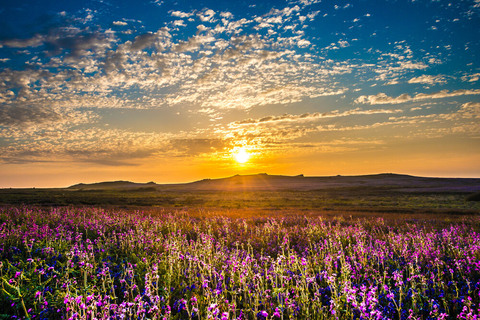
© Mike Alexander
Teifi Marshes
Wildlife highlights: Dragonflies, Damselflies, Kingfishers, Otters, Warblers
Teifi Marshes is one of the best wetland sites in Wales. The reserve has numerous trails through to explore, many of which are accessible. In summer, the reserve is a great place to see dragonflies and damselflies flitting over the water, as well as amphibians and reptiles. A plethora of birds can be found during the summer including Reed, Sedge and Cetti’s Warblers and both Whitethroats, Shelduck and Moorhen. If you are lucky you may spot a Kingfisher or Otter from one of the hides around the reserve.
The Glasshouse Café in The Welsh Wildlife Centre is the perfect place to get a cold drink and sweet treat after a day of wildlife watching. Please note the Visitor Centre will be closed from 4pm Thursday 20th June and re-open 10am Friday 28th June, to allow staff to take a break before the summer season.
Parking: There is a free car park for members and residents living in the SA43 and SA37 postcode areas. Please bring proof of residency and fill in a short application form (otherwise parking is £4 for all day). There is disabled parking next to The Welsh Wildlife Centre.
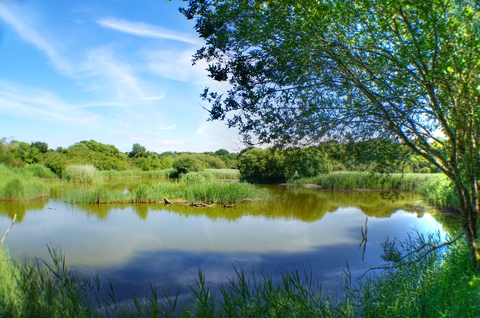
Goodwick Moor, Fishguard
Wildlife highlights: Otters, Water voles, Dragonflies, Damselflies, Warblers
Goodwick Moor, located in North Pembrokeshire, is a lovely place to connect with nature. The site has a new 500m long boardwalk to explore the reedbed and wildlife ponds. In June, look out for dragonflies, damselflies and butterflies like Comma, Painted lady and Ringlet. There are plenty of interesting plants to admire like Bogbean and Water mint. Keep an eye out for Sedge and Reed Warblers in the reedbed, Stonechats and Willow Warblers in the scrub and woodland. Swallows can be found roosting and skimming low over the reserve, a great sight to see. If you're lucky might spot a glimpse of an Otter or Water vole.
Parking: Visitors can park at Goodwick Bridge Car Park. Access is along a track beside the Seaview Hotel, and you enter the reserve via a footbridge.
Castle Woods
Wildlife highlights: Treecreeper, Spotted flycatcher, Sparrowhawk, Tawny Owl, Silver-washed fritillary
Set within The National Trust’s Dinefwr Estate, Castle Woods is a great place for woodland walk. The reserve is comprised of two areas of ancient semi-natural woodland with plenty of beautiful veteran trees. Look out for Great Spotted, Lesser Spotted and Green Woodpecker, Treecreeper, Nuthatch and Spotted Flycatcher in the woodland and birds of prey like Sparrowhawk and Buzzard flying overhead. The Speckled Wood is a dainty butterfly that can be seen flitting around the reserve and towards the end of June the Comma and Silver-washed Fritillary will emerge. The ruins of Dinefwr castle occupy an impressive position above the Tywi valley – a good vantage point to spot wildfowl on the river below.
Parking: Visitors can park next to the fire station off the A40 and walk down Dinefwr Park Drive. You can also park in Dinefwr car park which costs £5.00 and is free for Wildlife Trust or National Trust members. Please bring your membership card with you.
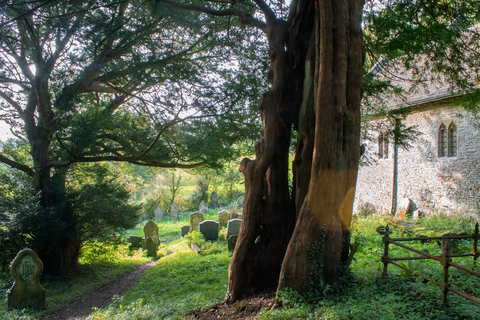
© Grace Hunt
Pengelli Forest
Wildlife highlights: Barbastelle bats, Oil Beetles, Purple Hairstreaks, Redstarts, Pied Flycatchers
This vibrant Celtic rainforest in North Pembrokeshire is a great place to visit in summer. It’s part of the largest block of ancient Oak woodland in West Wales and is home to a huge variety of wildlife. June is a great time to spot Redstart, Wood Warbler, Chiffchaff and Pied flycatcher in the woodland. There is plenty of invertebrate activity. Keep an eye on the ground for Oil Beetles, Speckled Bush Cricket in the scrub, and butterflies like Purple Hairstreaks and Silver-washed Fritillary flying by. If you’re lucky you may spot a Badger, Polecat, Wood mouse or Bank vole. If you visit at dawn or dusk, look out for the rare Barbastelle bat - one of eight species of bat which roost and forage in the woodland. Dormice, though seldom seen, leave the remains of Hazel nuts with the characteristic teeth marks around the site. Many plants can be seen flowering in the summer months from the Water Avens to Golden Saxifrage.
Parking: There is limited roadside parking is available at the entrance of the reserve.
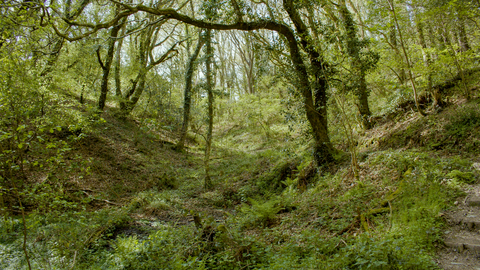
Grace Hunt/WTSWW
Allt Rhongyr
Wildlife highlights: Redstart, Raven, Wheatear, Wild Thyme, Bugle
Allt Rhongyr, set within the Bannau Brycheiniog National Park, offers dramatic views of Cribarth and the Tawe Valley. It features a mix of grassland and woodland, was once the site of an iron age hillfort. The reserve is full of flowers in June including yellow flowering rock rose, wild thyme, wild strawberry, salad burnet and bugle. Look out for birds such as Redstart, Wheatear, Raven.
Parking: Park on the roadside where there is a wider section just down hill from the main gate in to the nature reserve.
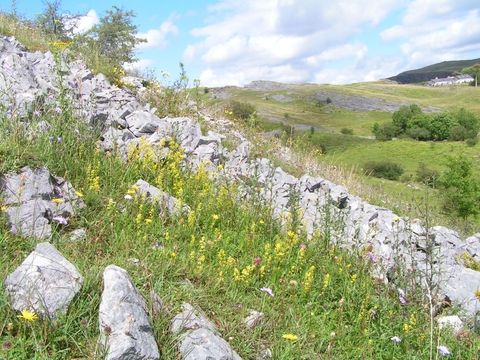
Parc Slip
Wildlife highlights: Lapwing, Orchids, Dragonflies, Damselflies, Common Lizard
Parc Slip is home to a variety of different habitats supporting over 1000 species. With plenty of accessible trails and cycle tracks it’s a great place to connect with some Wales’ rarest wildlife. Look out for Great crested newt in the ponds and lakes, charismatic Lapwing and Common lizards basking in the sun. In June, the wildflower meadows come alive with orchids, ragged robin and buttercups. Twenty species of dragonfly have been recorded on the reserve so look out for Emperor Dragonfly, Four Spot Chaser, and the Scarce Blue-tailed Damselfly. The hides are a great place to spot herons, swans and ducks. Look out for our two highland cows, who play an important role in managing the reserve.
Our Visitor Centre and Café are currently closed. However, we are delighted to work in partnership with Karrie's Coffee Co who serve delicious coffee and sweet and savoury treats from their van!
Parking: There is a free car park. There is disabled parking next to the visitor centre.
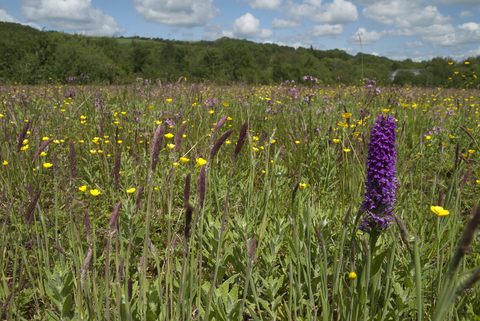
Lyndsey Maiden
Cwm Colhuw
Wildlife highlights: Grasshopper Warbler, Yellowhammer, Kestrel, Peregrine, Small Blue Butterfly
Cwm Colhuw is a beautiful costal reserve set within the Glamorgan Heritage Coast. During the Summer months the scrub and hedgerows provide nesting habitat for migrant birds such as Willow Warbler and Whitethroat. A number of other birds can be spotted including the Bullfinch, Grasshopper Warbler and Yellowhammer. Kestrel breed on the adjacent cliffs and use the grassland for hunting, and Peregrine is regularly seen. Two calcareous grassland fields on the summit of the slope are dominated by Oat Grass and Yorkshire Fog, with clumps of Salad Burnet, Kidney Vetch, and Wild Thyme in the shorter Rabbit grazed turf. The grassland provides a habitat for butterflies such as Small Heath, Ringlet and Small Blue and nationally scarce Wild Cabbage grows near the cliff edge, in places sheltered from grazing.
Parking: You can park at Llanwit Major Beach car park and access the reserve by the steps from the eastern side of car park.
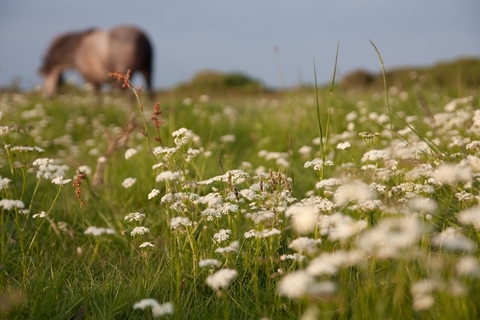
© Duncan Ludlow
Taf Fechan
Wildlife highlights: Small Pearl-bordered Fritillary, Tawny Owl, Dipper, Common Spotted Orchid, Bryophytes
Taf Fechan is a beautiful valley with a 2.5km river surrounded by scrub, grassland and heathland. Look out for Common blue, Meadow brown, Small copper, and Small pearl-bordered fritillary in the grassland and heathland. A mosaic of deciduous woodland on the slopes with a canopy of Beech, Birch and Ash attracts a variety of birds. Tawny Owl, Buzzard, Great Spotted woodpecker, Jay, Nuthatch, and Treecreeper can be seen flying about the woodland while Dipper and Grey wagtail are frequently seen, and breed, on the river. The area of grazed grassland to the south on the east bank of the river is particularly rich in flowers such as Wild Thyme, Common spotted orchid, Rough hawkbit and Mouse-ear hawkweed. The valley is one of the best recorded sites for bryophytes in Glamorgan.
Parking: Park in layby on Vaynor Road.
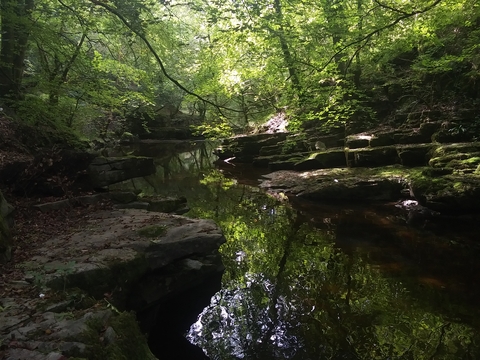
© Duncan Ludlow
Overton Mere
Wildlife highlights: Oystercatcher, Linnet, Bloody-nosed beetle, Green Tiger Beetle, Silky Wave Moth
Just half a kilometre away from the village of Overton and named after the bay over which it looks Overton Mere is perfect for a sunny day out. The reserve has almost the full range of South Gower Coast habitats ranging from Hawthorn and Blackthorn scrub, through mixed Gorse and heath, open limestone scree, to improved and unimproved limestone grassland. June is undoubtedly the best time to visit this reserve with lime-loving flowers such as Common rock-rose, Milkwort, Eyebright, and Thyme flourishing while Linnet, Meadow pipit, and Stonechat search for food. Listen out for the distinctive call from Oystercatcher which can be seen in the Mere at low tide. Bloody-nosed beetle and Green tiger beetle are regularly to be found on the path in summer, the rare Silky wave moth hides in the Gorse, and an assemblage of solitary bees and wasps nest in tunnels dug in the soft sediments of the wave cut platform.
Parking: You can park at Port Eynon Car Park. Access to the reserve can be gained by way of the first field gate on the left on the track leading out of Overton Village to the west, or by way of the coastal public footpath and stile from Port Eynon Point.
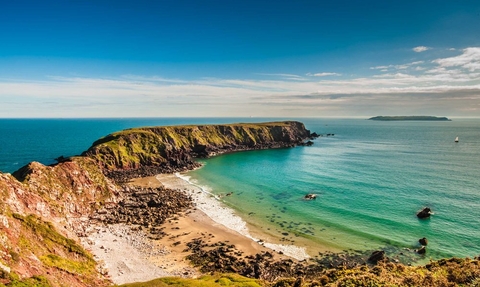
© Mike Alexander
